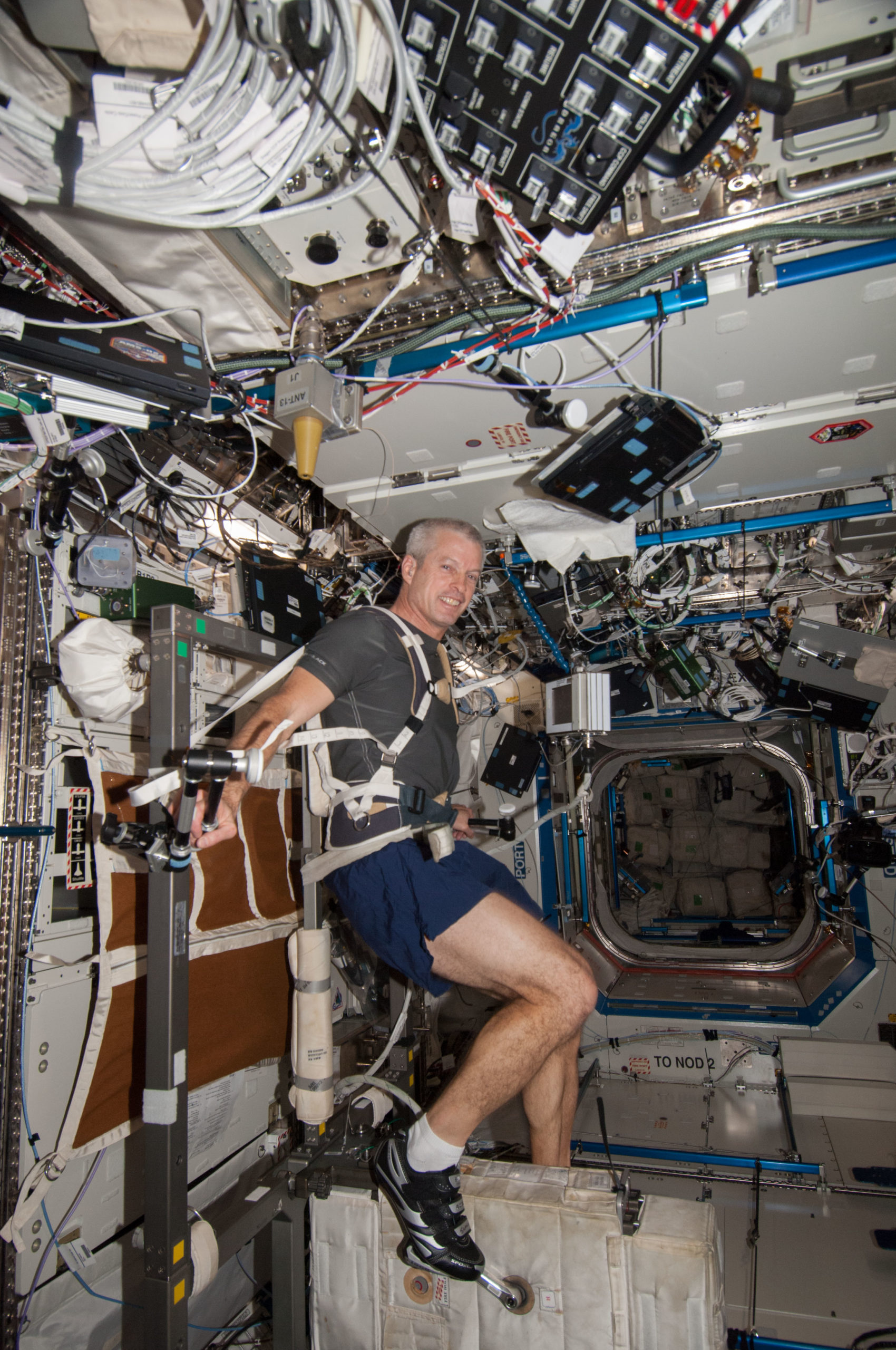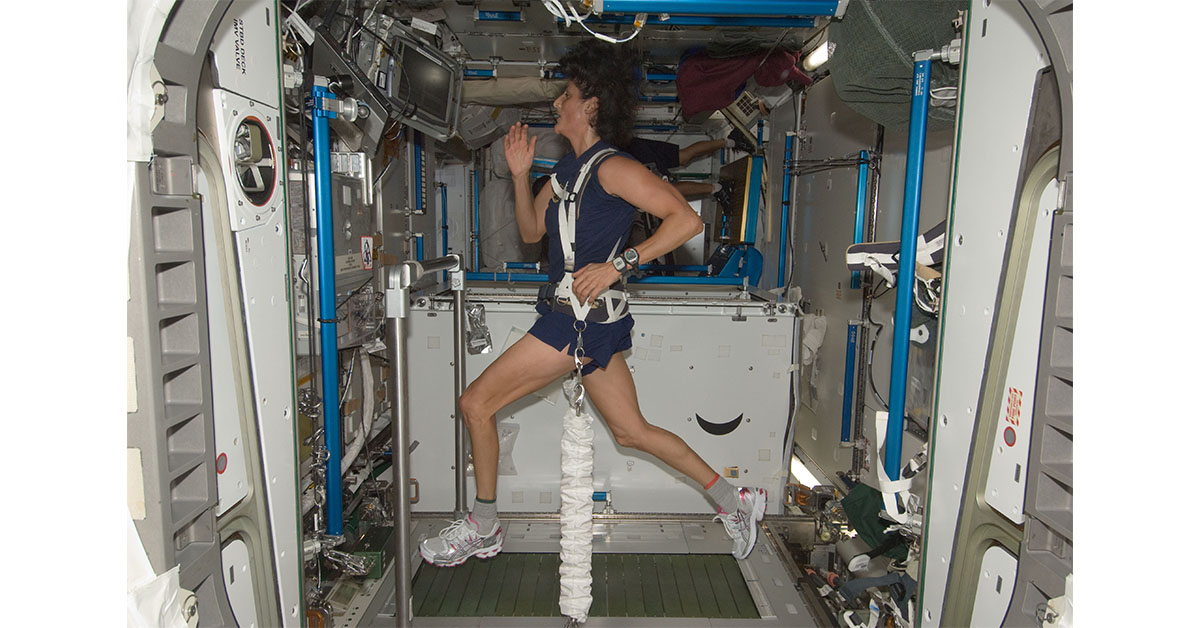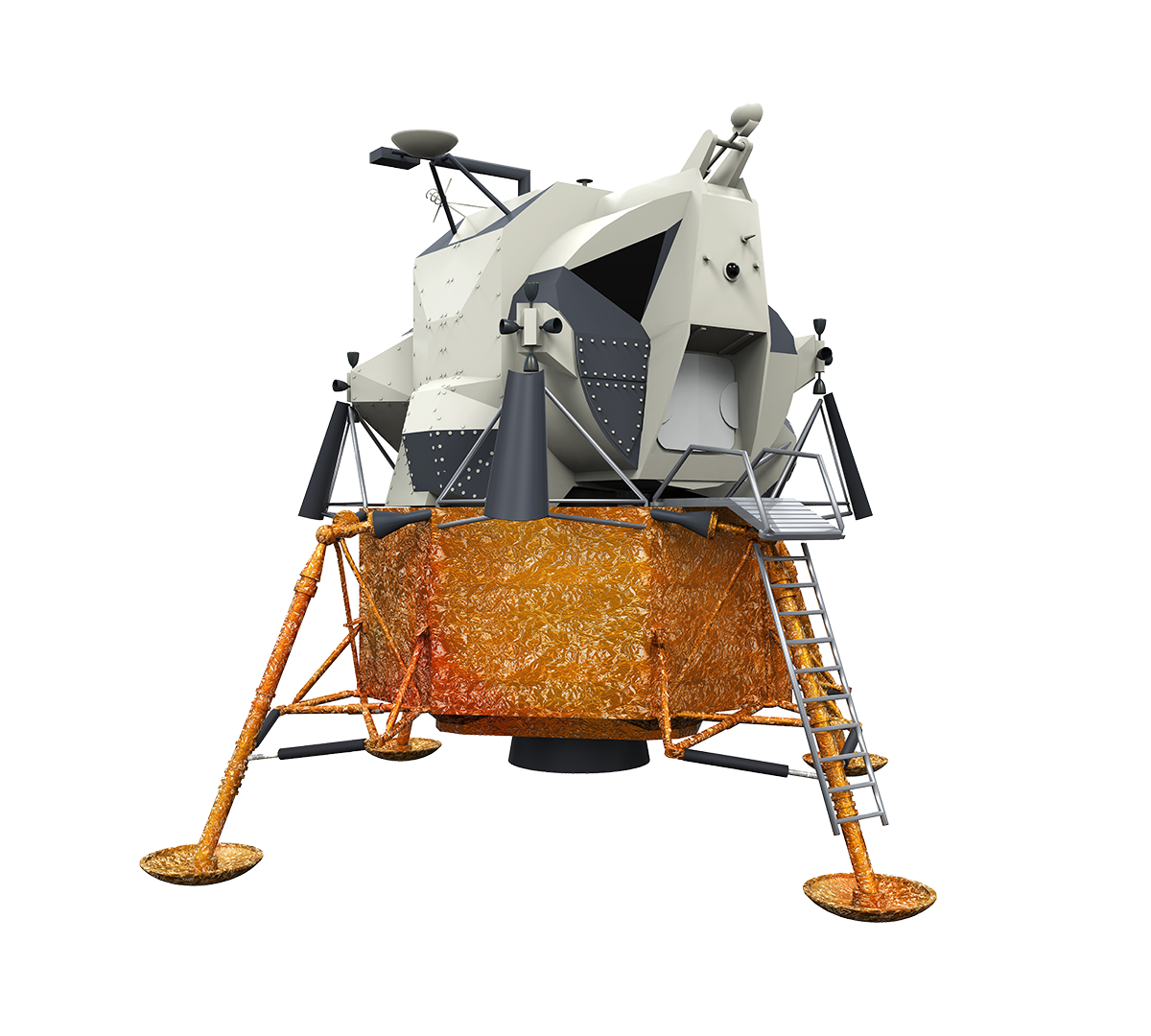TOPIC: How Astronauts stay healthy and fit in space
If you believe it’s challenging trying to stay fit, try staying healthy and in shape while in space!
The microgravity environment in space doesn’t provide the same resistance we experience on
Earth, which puts the astronauts’ bodies in danger of deterioration. Studies have shown crew members lose bone mass at a rate of 1 to 2 percent per month while in orbit.
To counteract this, astronauts must spend way more time exercising in space in order to keep their muscles and bones healthy. For example, astronauts on the International Space Station (ISS) spend two and a half hours a day, six days a week, working out.
This is accomplished primarily through the use of three exercise machines onboard -- the Cycle Ergometer, a treadmill (COLBERT), and a weightlifting machine called ARED, for Advanced Resistive Exercise Device (ARED).
Cycle Ergometer: This is like a bicycle where the main activity is pedaling. It is used to measure fitness in space because it’s easy to check heart rate and how much effort is being done, which is closely monitored by NASA scientists on Earth.
Treadmill (COLBERT): Walking or jogging on the treadmill is like walking on Earth. Walking is the single most important way to keep bones and muscles healthy. Since the lack of gravity tends to make people float, harnesses are attached to the astronauts to hold them to the walking surface.
Photo Credit: NASA
Resistance Exercise Device (ARED): The ARED system is used to counterattack the bone loss brought on by extended time in microgravity. To use it, astronauts pull and twist rubber-band like cords attached to pulleys. The ARED can be used for a total body workout including anything from squats and bending exercises for the legs, to arm exercises and heel raises.
Predictably, astronauts embrace the challenge of maintaining their health while in space with the same proficiency and vigor they approach their many other tasks. Some even challenge themselves in unique and ambitious ways.
Expedition 15 crew member Sunita Williams, for instance, ran the Boston Marathon while in orbit on a station treadmill in April of 2007. Her official completion time was 4 hours, 23 minutes, 10 seconds.
The close attention to astronauts’ health doesn’t end when they return to Earth. Once back home, they go through a series of physical and medical tests to see how their bodies withstood the space environment. They typically come back feeling disoriented as their bodies adjust to gravity again.
Astronauts also have to rebuild their muscle strength. Even with constant exercise in space, they can lose up to 20 percent of their muscle mass during missions lasting only five to 11 days.
After astronaut Scott Kelly spent 340 days in space, it took some time for him to re-adjust to Earth’s gravity since his bones had become brittle. Along with bone deterioration, Kelly suffered from “space blindness” brought on by the shift of cerebral spinal fluid while living in a microgravity environment.
Kelly also grew about two inches during his time in space since his spine elongated due to lack of gravity; however, after less than two days back on Earth, his spine returned to normal due to gravity’s pull.
Being an astronaut, while a dream job for those who attain it, requires a lot of physical exertion to keep their bodies from being affected by the lack of gravity. We celebrate those who have been to space not only for the strength of their minds, but for their willpower which allows them to return safety to Earth and its gravity.



